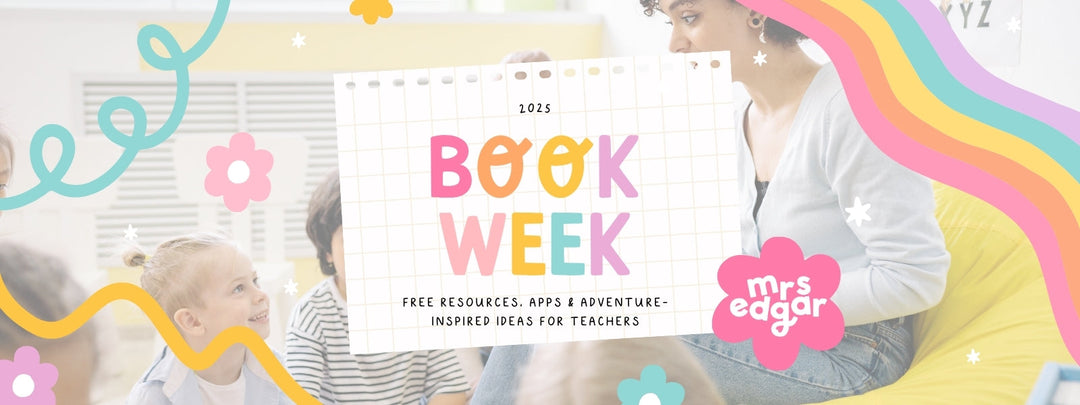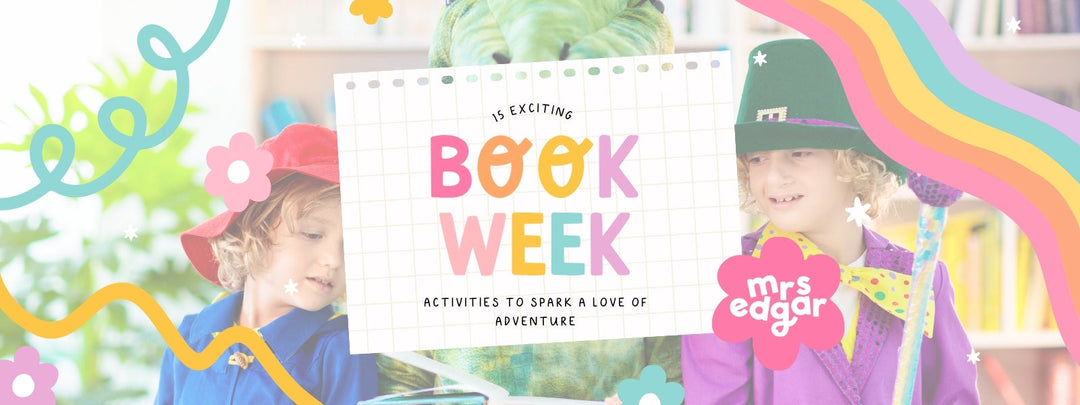10 Ways Writing Goals Can Transform Your Classroom
Hey teacher!
Incorporating writing goals into your classroom routine can revolutionise how students engage with and grow in their writing skills. Goals provide direction, spark motivation, and foster a sense of achievement.
Here are 10 inspiring ways to integrate writing goals into your teaching practices:
1. Personal Writing Progress
Encouraging students to set individualised writing goals is an excellent way to foster a sense of ownership and personal growth in their learning journey.
These goals allow students to focus on specific areas of improvement, such as refining sentence structure, expanding vocabulary, or mastering punctuation, and provide a clear pathway for their development.
By tracking their progress over time, students can see tangible evidence of their achievements, which boosts their confidence and motivation.
Tracking progress is essential to keep students motivated and focused on their goals. This is where tools like the Writing Goals Chart come in handy. This chart features 12 key writing goals , each with accompanying visual examples to help students understand and achieve specific skills.
2. Focus for Writing Assignments
Adding clarity to writing tasks is a powerful way to help students stay focused and understand what they need to achieve. By attaching specific objectives to each writing assignment, students gain a clear sense of direction and purpose, making the writing process less daunting and more manageable.
These goals can act as a roadmap, guiding students through each stage of the writing process and allowing them to build confidence as they progress.
3. Peer Review Sessions
Peer review sessions are an excellent way for students to engage with one another’s work, build a sense of community, and develop critical thinking skills. However, without a clear focus, peer feedback can sometimes lack direction, making it less helpful to both the reviewer and the writer.
By turning peer feedback into a goal-driven activity, you can ensure that students offer constructive, specific advice that directly supports the growth of their classmates' writing skills, while also aligning with their own personal writing goals.
4. Incorporating Learning Targets
Aligning writing goals with curriculum standards is a practical and impactful way to ensure that your students are mastering the essential skills they need for academic success. By integrating these targets into your teaching, you provide students with clear, purposeful objectives that not only support their growth as writers but also help them meet the expectations of the curriculum.
One key strategy is to focus on specific skills required by the curriculum, such as paragraph organisation , descriptive language , or persuasive techniques . For instance, if your curriculum emphasises the importance of well-structured paragraphs, you can set goals that guide students in crafting paragraphs with clear topic sentences, supporting details, and logical transitions. Similarly, when teaching descriptive writing, you might align the goal with using sensory language and vivid imagery to create engaging and detailed narratives.
5. Self-Assessment Tools
Display the goals chart in a prominent spot where children can easily see it and use it as a self-assessment tool. Encourage students to review their work against the chart, checking for key elements such as clarity, coherence, and creativity.
This process not only helps them refine their writing before submitting it for feedback but also fosters independence and accountability in their learning journey.
6. Goal-Setting Challenges
Introducing monthly or termly goal-setting challenges with exciting themes can transform writing from a routine task into an engaging and rewarding experience.
These challenges encourage students to focus on specific objectives, such as completing a creative poem, mastering transitions in essays, or integrating advanced vocabulary into their writing.
By framing these goals within a fun and structured challenge, students are motivated to stretch their skills while enjoying a sense of accomplishment.
For instance, a “Master of Metaphors Month” could challenge students to incorporate a set number of metaphors into their writing, encouraging creativity and the use of vivid imagery. Alternatively, a “Persuasive Pro Day” could focus on developing strong thesis statements and compelling arguments for a persuasive essay.
These themes not only align with curriculum objectives but also give students an opportunity to experiment with different writing styles and techniques in a low-pressure, fun environment.
7. Writing Portfolios
Creating writing portfolios is a powerful way to help students see their growth as writers over time. By compiling their work in one place, students can reflect on their progress, celebrate their achievements, and identify areas for further improvement. Portfolios are not just a storage space for assignments—they are a dynamic tool for self-assessment and motivation, allowing students to see tangible evidence of their evolution as writers.
At the start of the school year, students can begin their portfolios with a “baseline” piece of writing, such as a narrative or essay, which serves as a starting point for tracking their development. As they add new pieces over time, students can see how their skills improve, whether it’s crafting stronger introductions, incorporating richer vocabulary, or organising their ideas more effectively.
These comparisons provide valuable insight into their progress and build a sense of pride in their accomplishments.
Periodic evaluations of the portfolio can further enhance this process. For example, at the end of each term, students can review their work and reflect on the goals they’ve achieved. You can guide them through questions like:
- Which piece are you most proud of, and why?
- What writing skill have you improved the most?
- What’s one area you want to focus on next?
Using tools like the Editable Writing Goals Chart alongside portfolios can add structure to this reflection. Students can include the chart in their portfolios, marking off goals as they achieve them and setting new ones based on their evaluations.
For instance, if a student realises they’ve mastered crafting compound sentences but struggle with descriptive language, they can set a new goal to focus on sensory details in their next assignments.
8. Parent Engagement
Involving parents in the goal-setting process is a powerful way to extend learning beyond the classroom and foster a supportive environment for students at home.
When parents are aware of their child’s writing goals, they can play an active role in supporting their child’s progress, reinforcing the skills being developed, and celebrating their milestones.
This connection between home and school creates a more cohesive learning experience and strengthens the student’s motivation to succeed.
At the beginning of the term, you can share each student's personalised writing goals with their parents, either through email or a printed note. This provides parents with a clear understanding of what their child is working towards, whether it’s improving sentence structure, using more varied vocabulary, or mastering the art of crafting persuasive arguments.
By knowing the specific targets, parents can offer encouragement, ask their child about their progress, and even provide gentle reminders or suggestions for improvement at home.
9. Collaborative Writing Projects
Teamwork and writing go hand in hand when students collaborate on shared goals. Use the Writing Goals Chart to assign group objectives, such as improving paragraph structure or crafting cohesive narratives.
For example, each group could focus on a specific goal while working on a class newsletter or story. Display their progress on a shared class chart to foster a sense of unity and accomplishment.
10. Celebration of Achievements
Celebrating students’ writing achievements is a crucial part of fostering a positive and motivating classroom environment. When students feel recognised for their efforts and progress, they are more likely to stay engaged, develop confidence in their abilities, and continue striving to reach new goals.
By creating a culture of recognition, you help instill a sense of accomplishment in students, reinforcing the idea that hard work and persistence are valued and celebrated.
One effective way to celebrate achievements is through a “Writer of the Week” award. This recognition can be given to a student who has made significant progress toward their writing goals, demonstrated outstanding effort, or achieved a particular milestone. The award could include a certificate, a special mention during class, or even a small prize like a sticker or bookmark. This simple gesture not only celebrates the individual student’s success but also inspires their peers to focus on their own goals and work harder to achieve them.
Another impactful way to celebrate achievements is by creating a goals-achievement bulletin board . This can serve as a visual representation of students’ progress and foster a sense of collective success within the classroom. Each time a student meets a writing goal—whether it’s crafting a compelling story opening, improving their paragraph organisation, or using more varied vocabulary—they can have their achievement displayed on the board.
You could use a star system, stickers, or even sticky notes with the student’s name and their specific goal achievement. This public recognition not only motivates the student who is being celebrated but also encourages others to set and reach their own goals, knowing their hard work will be recognised.
Additional Writing Resources You Might Find Helpful
Incorporating writing goals into the classroom is not just about improving students' writing skills—it's about fostering a mindset of growth, perseverance, and celebration.
By encouraging students to set personal writing goals, align their objectives with curriculum standards, engage in peer feedback, and track their progress through portfolios, you create a structured, motivating environment that empowers them to succeed. Celebrating achievements, whether through “Writer of the Week” awards, bulletin boards, or shared writing showcases, reinforces the value of effort and progress, inspiring all students to reach their full potential.
As teachers, we have the power to shape not just our students’ writing abilities but also their confidence, creativity, and love for learning. When students are actively involved in setting and achieving their writing goals, they become more invested in their growth and take pride in their accomplishments.
By creating a culture of goal-setting and celebration, we encourage our students to see writing as a journey—one filled with opportunities to learn, grow, and celebrate every step of the way.















Leave a comment